
images/Psathyrella/Psathyrella_ech.jpg
Small to large agaric, growing on soil or ground, in litter or mulch, on wood or rarely on dung, with a dark brown, purple-brown or black spore print. Pileus pale or brown, rarely reddish, greenish, purple, grey or black, not viscid, strongly hygrophanous (and often becoming very pale after drying). Lamellae adnexed, adnate or rarely sinuate. Stipe central. Partial veil remnants absent. Spores yellow-brown, reddish brown, brown or greyish, smooth; germ pore narrow or broad, rarely absent. Cheilocystidia present. Chrysocystidia absent. Lamellar trama regular. Pileipellis a hymeniderm or an epithelium. Clamp connections present.
Fruit-bodies of
Psathyrella are rather fragile. The genus is close to
Panaeolus, which shares the black spore print and a pileipellis composed of globose or short elements. However,
Panaeolus is fleshy in texture, often occurs on dung and can have chrysocystidia. In addition, spores of
Psathyrella become paler in concentrated sulphuric acid (a test only to be undertaken while following appropriate safety procedures). Some species of
Conocybe and
Pholiotina have a fragile fruit-body and occur in similar habitats to
Psathyrella, but the spore print is ochre-brown. In
Psilocybe the pileus surface is usually viscid, while
Lacrymaria asperospora is very similar but has ornamented spores.
Coprinellus and
Coprinopsis are similar in many characters, but are almost always deliquescent and
Coprinellus often has pileocystidia.
Parasola is also similar, but the pileus is usually strongly plicate and the fruit-body, while not truly deliquescent, does tend to collapse.
Psathyrella (Fr.) Quél., Mém. Soc. Émul. Montbéliard, sér. 2, 5 [Champ. Jura Vosges 1]: 152 (1872).
Several species:
Psathyrella ammophila,
P. bambra,
P. bipellis,
P. candolleana,
P. cf.
cernua,
P. echinata,
P. fimbriata (=
Panaeolus),
P. cf.
hydrophila,
P. aff.
pennata (after fire) and
P. subprona [=
Coprinus, may be the same as
P. megasperma according to Nagy
et al. (2010a)]. More species expected to occur in Australia.
W.A., S.A., Qld, N.S.W., Vic. and Tas. (and probably also N.T.).
In native forests. Also in lawns or garden beds in parks and gardens. Some species common after fire.
On the ground, among mulch, or on wood or woody litter; rarely on dung.
Saprotrophic.
Bougher, N.L. (2009a),
Fungi of the Perth region and beyond: a self-managed field book, Western Australian Naturalists' Club (Inc.), Perth. [
Description and
Illustration of
P. echinata]
Bougher, N.L. & Syme, K. (1998), Fungi of Southern Australia. University of Western Australia Press, Nedlands. [Description, Illustration and Microcharacters of P. candolleana]
Breitenbach, J. & Kränzlin, F. (eds) (1995), Fungi of Switzerland. Volume 4. Agarics 2nd part. Edition Mykologia, Lucerne. [Description, Microcharacters and Illustration of P. candolleana and 38 other species from Europe]
Fuhrer, B. (2005), A Field Guide to Australian Fungi. Bloomings Books, Hawthorn. [Description and Illustration of P. echinata and P. aff. pennata]
Fuhrer, B. & Robinson, R. (1992), Rainforest Fungi of Tasmania and South-east Australia. CSIRO Press, East Melbourne. [Illustration of P. echinata and an unnamed species]
Gerhardt, E. (1996), Taxonomische Revision der Gattungen Panaeolus und Panaeolina (Fungi, Agaricales, Coprinaceae), Bibliotheca Botanica, Heft 147, E. Schweizetbart'sche Verlagsbuchhandlung, Stuttgart.
Grgurinovic, C.A. (1997a), Larger Fungi of South Australia. The Botanic Gardens of Adelaide and State Herbarium and The Flora and Fauna of South Australia Handbooks Committee, Adelaide. [Description and Microcharacters of P. bambra, P. echinata and P. subprona (as Coprinus) and B&W Illustration of P. echinata]
Hood, I.A. (2003), An Introduction to Fungi on Wood in Queensland. University of New England, School of Environmental Sciences and Natural Resources Management, Armidale. [Description and B&W Illustration of P. cf. cernua and P. cf. hydrophila]
Horak, E. (2006), Psathyrella echinata (Cleland) Grgurinovic — taxonomy and ecology of a widely distributed agaric in Australia and New Zealand (including Auckland Island), Australas. Mycol. 25: 45–50. [Description, B&W Illustration and Microcharacters of P. echinata]
McCann, I.R. (2003), Australian Fungi Illustrated. Macdown Productions, Vermont. [Illustration of P. candolleana and P. echinata]
Nagy, L.G., Vágvölgyi, C. & Papp, T. (2010a), Type studies and nomenclatural revisions in Parasola (Psathyrellaceae) and related taxa, Mycotaxon 112: 103–141.
Young, A.M. (1989a), The Panaeoloideae (Fungi, Basidiomycetes) of Australia, Austral. Syst. Bot. 2: 75–97. [Description, B&W Illustration and Microcharacters of P. fimbriata (as Panaeolus)]
Young, A.M. (2005b), A Field Guide to the Fungi of Australia. University of New South Wales Press, Sydney. [Description and B&W Illustration of P. candolleana]

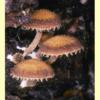
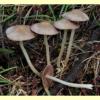
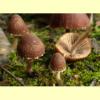
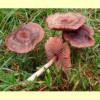
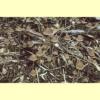
_AK_09_sml.jpg)
